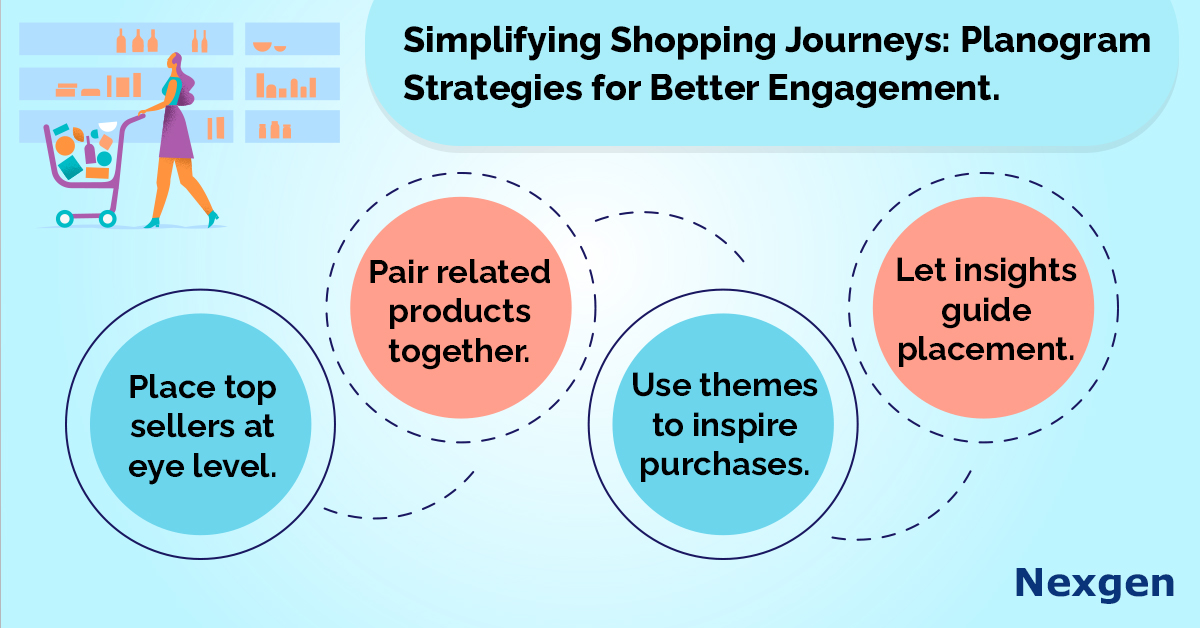Nowadays, retailers are constantly looking for ways to improve customer satisfaction, boost sales, and build brand loyalty. A cluttered store layout and confusing product placement can lead to frustration and lost sales. That is where the power of planograms comes in. These visual diagrams, detailing product placement on shelves, are essential tools for simplifying shopping journeys and boosting customer engagement. Here are five key planogram strategies to help you achieve just that:
1. The power of "eye level is buy level.”
This classic retail adage holds true. Place your most profitable and popular items at eye level to capture customer attention and encourage purchases. This strategic placement makes it easy for shoppers to find what they are looking for, reducing search time and frustration. Think about the products that drive the most sales or those you are actively promoting and give them prime real estate on your shelves.
2. Grouping for convenience and cross-selling.
Think about how customers shop and group related products together. For example, placing coffee filters next to coffee beans or shampoo next to conditioner makes sense and enhances the shopping experience. This strategy also opens opportunities for cross-selling. By placing complementary products together, you can encourage customers to purchase items they might not have otherwise considered.
3. Creating a visual story.
Planograms can be used to tell a story with your products. Create displays that showcase a particular theme or lifestyle. For instance, a display featuring baking ingredients alongside cookbooks can inspire customers and encourage them to purchase multiple items. Visual storytelling makes shopping more engaging and can create an emotional connection with your customers.

4.Guiding the customer's journey.
Use planograms to guide customers through your store. Place essential items at the back of the store to encourage shoppers to walk through different aisles and discover new products. Use signage and visual cues to direct customers to specific sections or promotions. A well-planned customer journey can increase browsing time and lead to higher sales.
5.Data-driven decisions.
Do not just guess where to place your products. Use data to inform your planogram strategy. Analyze sales data, customer behavior, and market trends to understand which products are most popular and how customers interact with your store. This data-driven approach allows you to optimize your planograms for maximum impact and ensure you meet the needs of your customers.
Overview of Nexgen POG
Nexgen POG is a robust and user-friendly cloud-based AI -powered planogram software. It is designed for quick and efficient planogramming with minimal effort. Planograms in retail can be designed by easily dragging and dropping the products. The multi-device compatibility feature of POG allows you to obtain, share and edit planograms on any device, including your phone. It helps with designing store-specific planograms for increased product visibility and sales.
Get Your Free Trial Now!